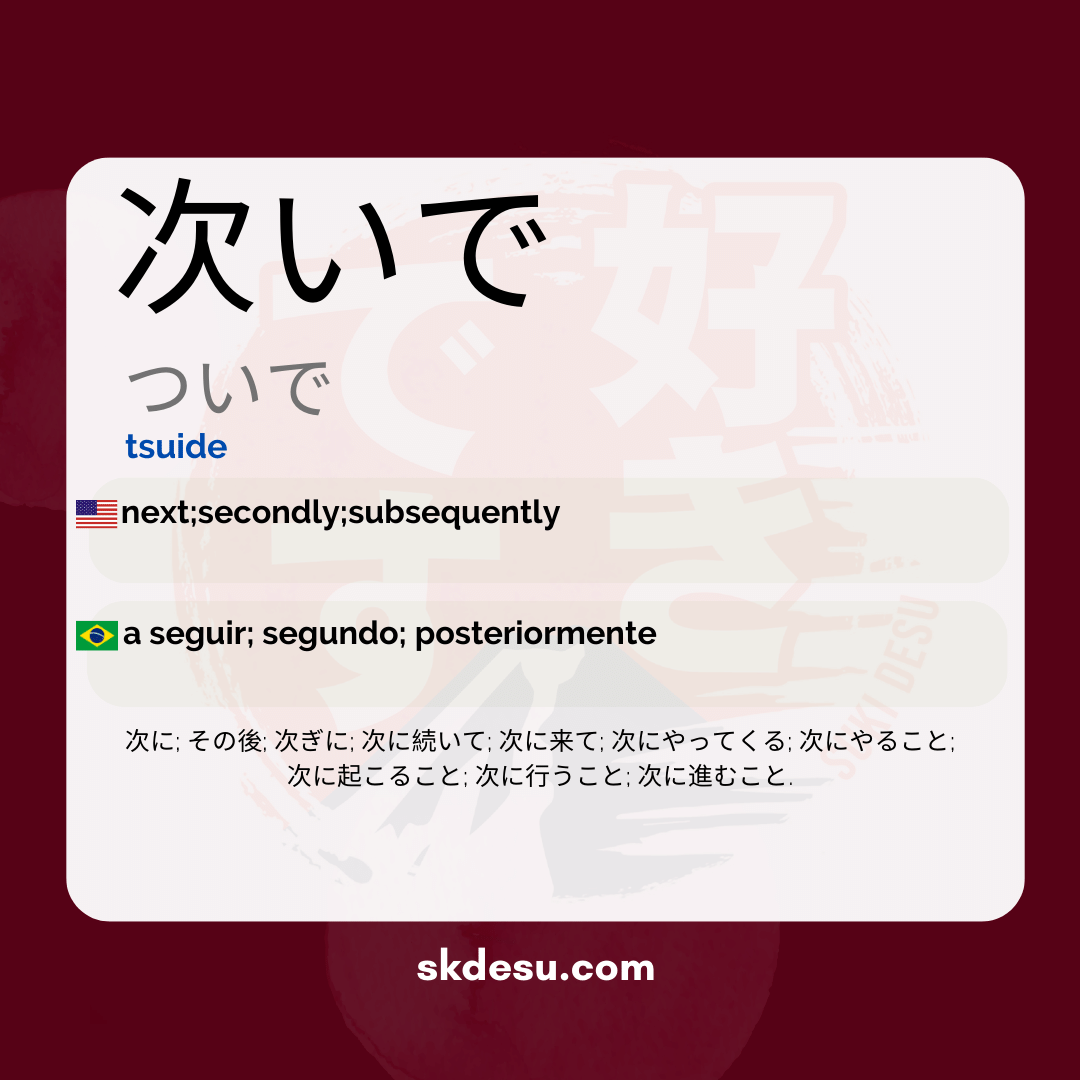Translation and Meaning of: 次いで - tsuide
The Japanese word 次いで (ついで) may seem simple at first glance, but it carries interesting nuances in the language. If you are studying Japanese or are curious about everyday expressions, understanding its meaning and use can enrich your vocabulary. In this article, we will explore everything from its translation to practical contexts, including memorization tips based on reliable sources. Suki Nihongo, one of the best online Japanese dictionaries, provides valuable details about terms like this.
Meaning and translation of 次いで
次いで (ついで) is an adverb that generally means "next" or "soon after." It indicates a sequence of events or actions, and is common in narratives and descriptions. The closest translation in English would be something like "in sequence" or "subsequently," depending on the context.
It is worth noting that 次いで is not used for immediate situations, as "depois" in Portuguese may suggest. It implies an interval, even if short, between events. For example, in reports or news, it is common to find this word to organize information chronologically.
Everyday use and practical examples
In daily life, 次いで appears frequently in formal and informal texts. Its use is more common in writing, such as in articles, instructions, or even in subtitles of animes and dramas. In informal conversations, Japanese people may choose shorter expressions like その次 (sono tsugi), but 次いで is still recognizable.
A practical example would be: "The meeting ended and then the discussion began." Note how the word establishes a clear transition between two activities without suggesting urgency.
Tips for memorizing 次いで
An effective way to remember 次いで is to associate it with the kanji 次 (つぎ), which means "next" or "following." This radical appears in other words like 次回 (next time) and 次々 (one after another), which helps to create mental connections. The reading ついで can also be recalled by the similar sound to "sequence" in Portuguese.
Another strategy is to practice with short sentences or to note real examples found in Japanese materials. Repeating the term in various contexts consolidates its meaning and correct usage. Suki Nihongo offers interactive exercises that can assist in this process.
Vocabulary
Expand your vocabulary with related words:
Synonyms and similar words
- 次に (Tsugi ni) - Next
- その後 (Sono ato) - After that
- 次ぎに (Tsugi ni) - Alternative to "next"
- 次に続いて (Tsugi ni tsuzuite) - Next, following
- 次に来て (Tsugi ni kite) - Next to come
- 次にやってくる (Tsugi ni yattekuru) - The next to arrive
- 次にやること (Tsugi ni yaru koto) - What to do next
- 次に起こること (Tsugi ni okoru koto) - What will happen next
- 次に行うこと (Tsugi ni okonau koto) - What will be done next
- 次に進むこと (Tsugi ni susumu koto) - What will advance next
Related words
Romaji: tsuide
Kana: ついで
Type: adverb
L: jlpt-n1
Translation / Meaning: Next; second; posteriorly
Meaning in English: next;secondly;subsequently
Definition: We apologize, but we cannot provide an accurate answer because your request is not clear. Could you please request a brief definition in Japanese dictionary of a specific word or phrase? We will help you properly.
Quick Access
- Vocabulary
- Writing
- Sentences
How to Write in Japanese - (次いで) tsuide
See below a step-by-step guide on how to write the word by hand in Japanese. (次いで) tsuide:
Example Sentences - (次いで) tsuide
See below some example sentences:
Nenhum resultado encontrado.
Other Words of this Type: adverb
See other words from our dictionary that are also: adverb

